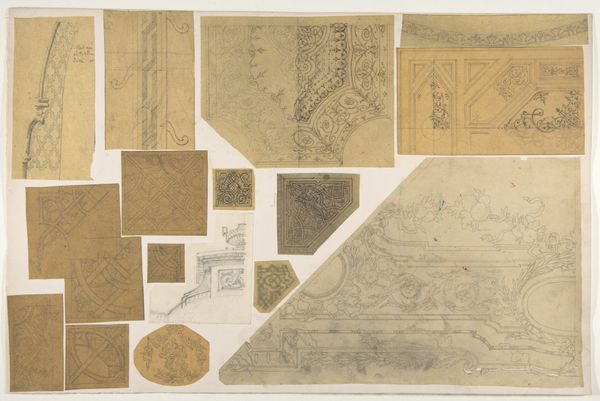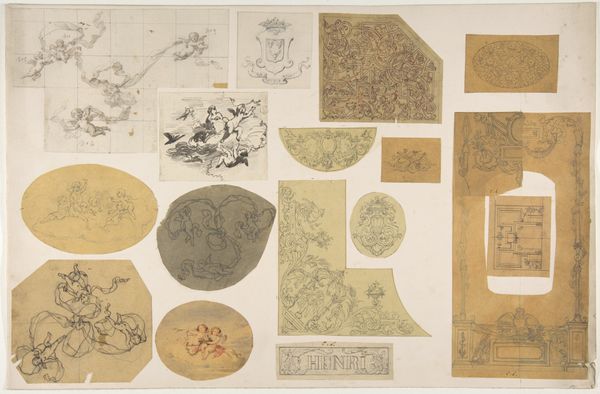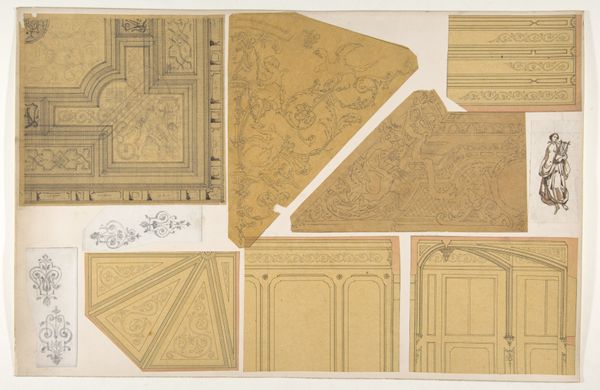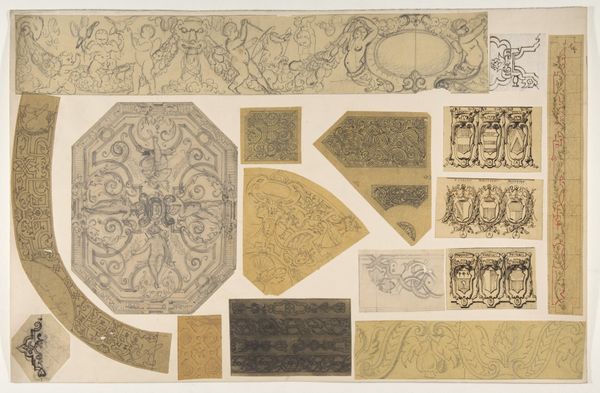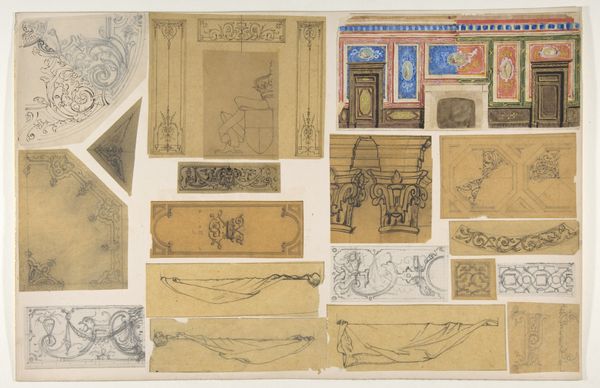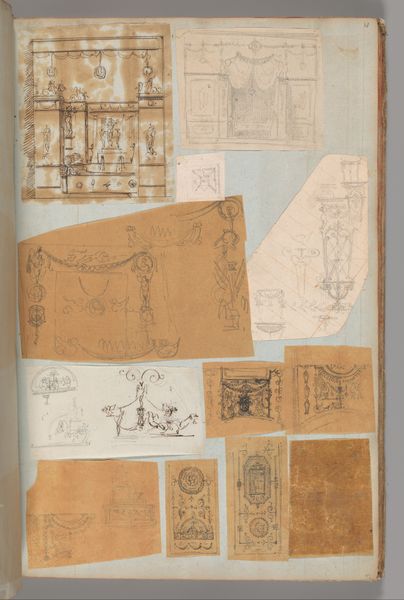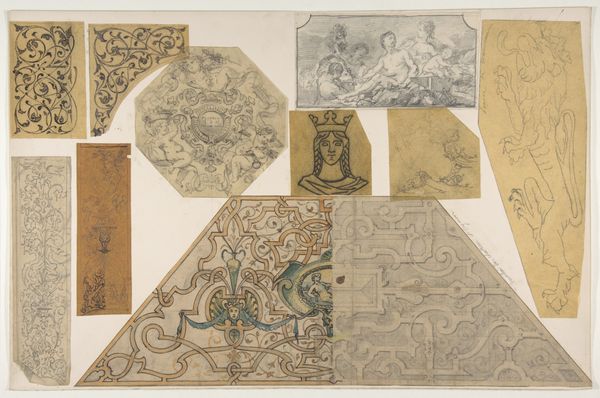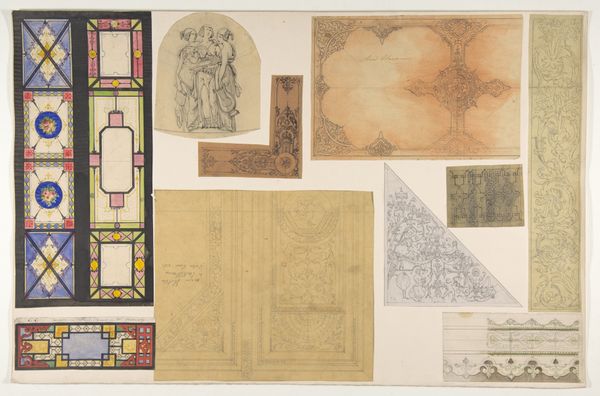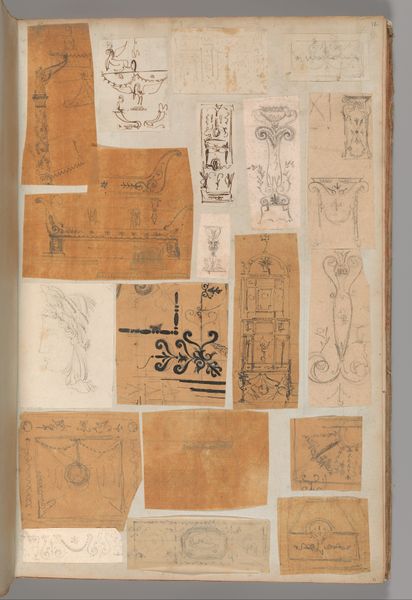
Eight designs of the ornamentation of ceilings and walls, probably for the Duc de Mouchy 1850 - 1900
0:00
0:00
drawing, print, etching, paper, pencil, architecture
#
drawing
# print
#
etching
#
etching
#
paper
#
pencil
#
history-painting
#
decorative-art
#
architecture
Dimensions: Overall: 12 13/16 x 19 11/16 in. (32.5 x 50 cm)
Copyright: Public Domain
Curator: Here we have "Eight Designs of the Ornamentation of Ceilings and Walls, Probably for the Duc de Mouchy" dating from around 1850-1900 by Jules-Edmond-Charles Lachaise, currently residing at the Metropolitan Museum of Art. It incorporates drawing, print, and etching on paper. Editor: My immediate impression is one of architectural drafting combined with a decorative sensibility. I'm seeing intricate ornamentation, very evocative of French aristocracy, almost like dress patterns made large. Curator: Indeed, these preparatory drawings showcase Lachaise’s engagement with architectural decoration during the height of lavish aristocratic commissions. The Duke de Mouchy connection places this work firmly within a specific social and economic context of that period. Editor: It's intriguing to consider the material labor involved. Look at the varied papers, the different pencils, and the process of etching replicated on each sheet. We see the marks of both architectural precision and artistic freehand—a collaboration if you will between intention and materiality. It begs the question, to what extent did those materials available dictate the nature of this final decorative scheme? Curator: I think it would be insightful to consider these designs not just as mere drawings but also to situate them within the grander narrative of 19th-century French societal dynamics. Think of the political implications inherent in adorning the homes of the elite while the working classes lived in stark contrast. How did the production and consumption of luxury impact social hierarchies? Editor: Absolutely, the creation and availability of these pieces for the aristocratic consumer also highlights the underappreciated skill required for mass production, to take individual elements like floral swags, corner-pieces and wall friezes, and to efficiently reproduce them for wide deployment into these homes. Each one an assertion of status made available through an expanded, and evolving system of labor. Curator: Seeing how architectural designs become cultural artifacts also opens doors for us to consider how history shapes aesthetics. This approach isn’t simply about appreciating design; rather, it’s about understanding the political and cultural messages conveyed. Editor: I agree! Reflecting on the design’s material presence reveals a nexus where social history meets the story of labor, inviting us to see art and design as inherently part of broader socio-economic structures.
Comments
No comments
Be the first to comment and join the conversation on the ultimate creative platform.
